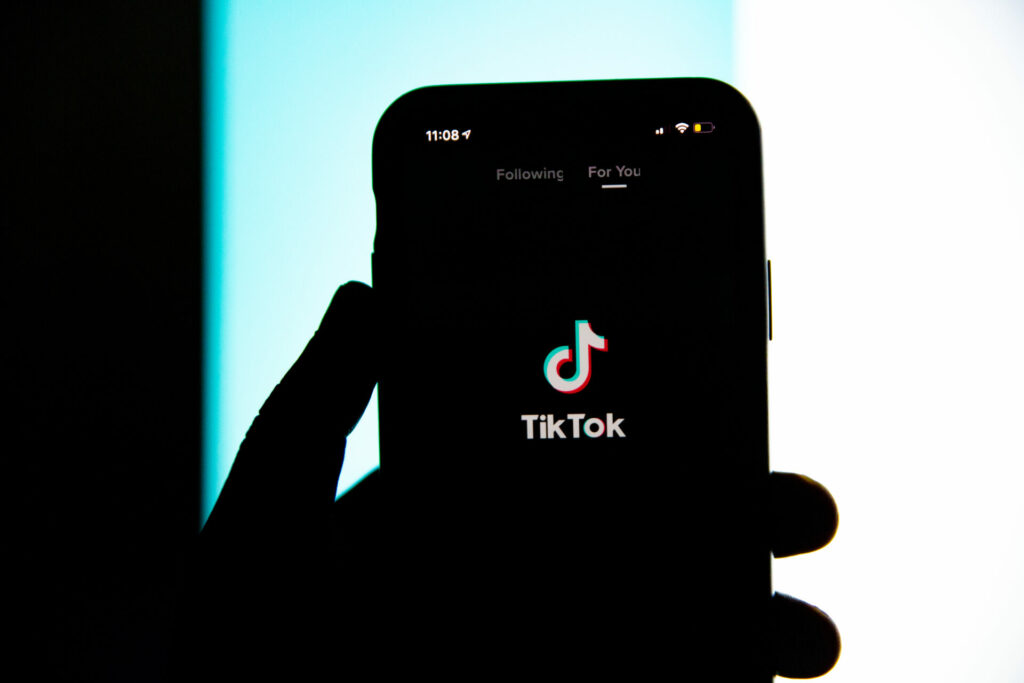The social media app TikTok continues to gain in popularity among young people. Among 18- to 24-year-olds, it has a larger share of daily screen time than Instagram, Facebook and WhatsApp combined for the first time, according to the annual Digimeter survey.
On average, young people spend almost an hour and a half (80 minutes) a day on TikTok, according to the results of the 2023 Digimeter, which provides a comprehensive overview of the digital lives of people in Flanders.
Unlike the so-called 'snacking' on other social media platforms (where people use them regularly but in short bursts), TikTok is typified by very long periods of use. Strikingly, it is not breaking through to other generations and remains largely limited to young people, who use it very intensely.
"TikTok continues to write a distinct story. With 16% active users in Flanders, it is unable to penetrate the mass market. It remains largely limited to a niche phenomenon among young people (63%), among whom it is used intensively," the researchers said.
Three hours of screentime
The survey also found that people spend over three hours (182 minutes) a day on their smartphone, on average – three minutes less than last year. In general, the time a person spends on their smartphone seems to stabilise around three hours.
The researchers noticed a break in the trend since the Covid-19 pandemic: until then, people in Flanders used their smartphone for an average of 2.5 hours per day; after the pandemic, half an hour was added.
About a quarter of this screen time is spent on social media, the survey showed. Meta's apps may be losing ground among young people, but 82% of respondents still use one of the company's apps every day. Fewer people use Facebook, but more than half of respondents still use the platform daily. On top of that, Instagram and WhatsApp are still growing.

Credit: Belga
The number of apps on people's smartphones also continued to rise, to an average of 90 now – some 15 more than two years ago. People also use their smartphones more often for online shopping and to manage their finances.
"For both government services and other services (shopping, banking, work, etc.), we see that more and more Flemish people are finding their way to online services and are breaking away from the classic physical form via paper, at the counter or at the workplace," the researchers said.
Still, breaking away from the 'classic' forms of service provision does not equate to letting go of that service; the number of Flemish people who rely entirely on online services is even declining. "The reality is therefore one that is mainly hybrid in nature, and where we still have a digital divide in terms of access, skills and attitudes."
Dependency paradox
However, people are finding their own screen use increasingly problematic: almost half of Flemish people say that they are dependent on their smartphones. Especially among younger generations, this dependence is increasing: among 18- to 24-year-olds, the percentage has risen to 71% – almost 10% more than last year.
More and more people have started considering their own dependence a problem: 40% answered 'yes' when asked if they spend too much time on their smartphones. Researchers speak of a 'dependency paradox': people increasingly use their smartphones and social media, but at the same time they worry about this increased dependence.
Many people also (try to) do something about it: 80% of people impose rules on themselves to keep their screen time under control, but only half of them feel that this helps effectively.

Credit: Belga / Benoit Doppagne
The survey also found that Netflix is past its peak, and that (free) online streaming platforms from local channels – VRT MAX, VTM GO and GoPlay – have a nearly similar reach to subscription streaming platforms. "The focus of the Flemish viewing pattern is increasingly shifting online. Live (and delayed) viewing is declining and 'cord-cutting' continues."
At 48%, however, Netflix remains the most popular streaming platform in Flanders, even if its competitors Disney+, Amazon Prime and Streamz are also gaining ground.
Related News
- TikTok overtakes Google as most popular search engine among Gen Z
- Netflix far exceeds expectations, adding 13 million subscribers
- 'Rabbit hole effect': European Commission opens formal investigation into TikTok
Compared to last year, Flemish channels are particularly reaching more young people: among 18- to 24-year-olds, VRT MAX saw an increase of almost 20%. Just over half of them (54%) watch or listen to VRT programmes via the platform, in addition to international programmes.
Still, watching live TV via subscription is not disappearing, even if it is sinking further: the number of people in Flanders who say they still watch live TV every day is 45%.

